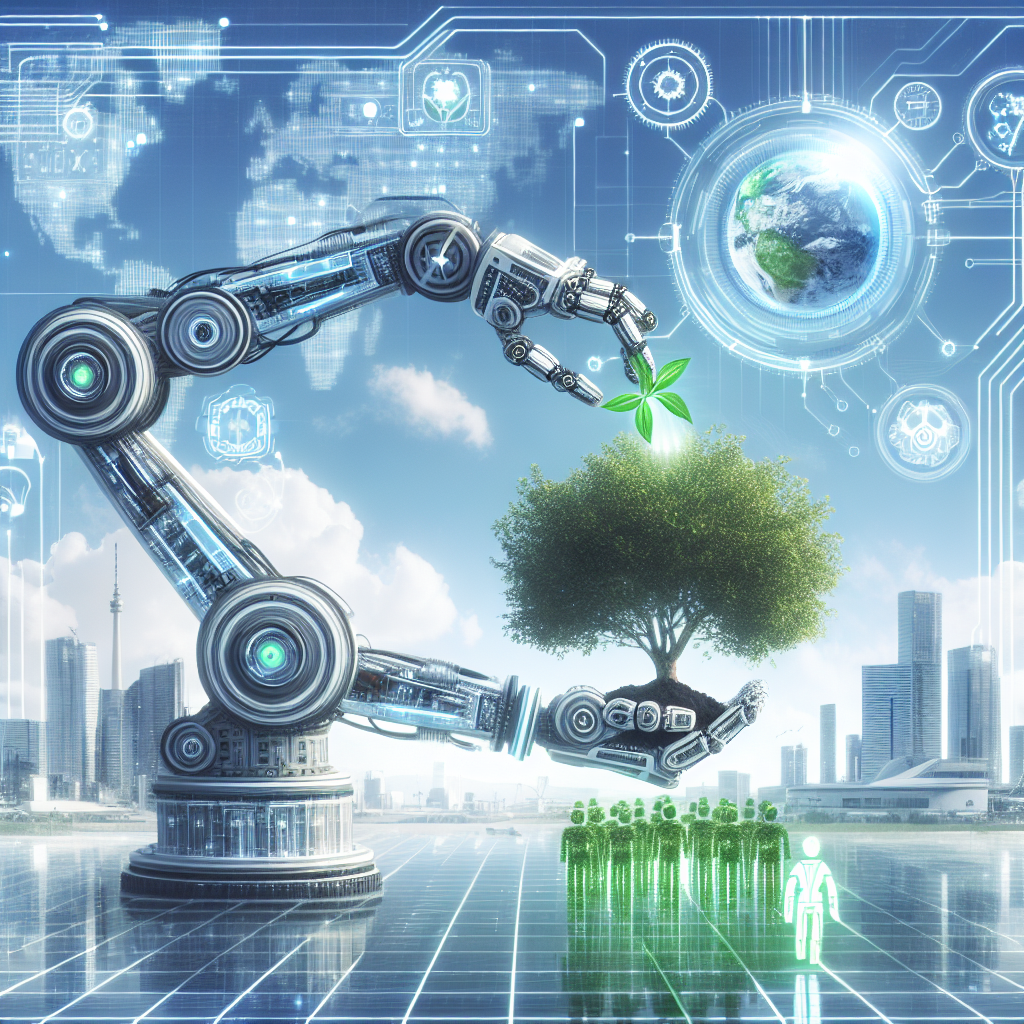The fusion of artificial intelligence (AI) and robotics is transforming industries, leading not only to increased efficiency but also advancing sustainable development. Modern robotics integrated with AI can optimize resource use, reduce waste, and manage complex environmental monitoring tasks, setting the stage for innovations that contribute to a more sustainable future.
The integration of AI-driven robotics in several sectors such as agriculture, manufacturing, and waste management exemplifies not only technological innovation but also environmental stewardship and resource conservation. This article explores how AI-driven robotics contribute to sustainable development goals (SDGs) and addresses the challenges and implications of deploying these technologies.
Agriculture
In agriculture, AI-driven robotic systems are revolutionizing the way food is grown. These technologies enable precision farming, which involves the precise application of resources like water, fertilizers, and pesticides, thereby minimizing runoff and reducing environmental impact. Drones and automated harvesters can collect data and perform tasks with minimal human intervention, ensuring optimal crop health and yield.
Manufacturing
The manufacturing sector benefits significantly from robotic automation, particularly in terms of reducing its carbon footprint. AI robots can optimize energy use in production processes and decrease factory waste through more precise assembly and material handling. These improvements not only enhance efficiency but also substantially reduce the ecological impact of manufacturing operations.
Waste Management
In waste management, AI-driven robots are equipped to sort and recycle waste more efficiently than human workers. Utilizing a combination of sensors, machine learning models, and robotic arms, these systems can identify, sort, and process recyclables, reducing the amount of waste destined for landfills and improving recycling rates.
Table: Impact of AI-Driven Robotics on Selected SDGs
| SDG | Role of AI-Driven Robotics | Examples |
|---|---|---|
| SDG 2 (Zero Hunger) | Enhancing agricultural productivity and sustainable food production through precision farming. | Robot-assisted planting systems, AI-based crop monitoring drones. |
| SDG 6 (Clean Water and Sanitation) | Monitoring and managing water resources efficiently to prevent wastage and pollution. | Water treatment robots, AI for leak detection in pipelines. |
| SDG 12 (Responsible Consumption and Production) | Optimizing resource use and improving waste management practices. | Automated sorting systems in recycling centers, AI in supply chain management. |
As quoted by Dr. Jane Smith, a leading expert in AI-driven sustainability solutions, “Integrating AI with robotics not only streamlines operations but substantially contributes to the environmental aspect of sustainability. These technologies are pivotal in achieving the SDGs by enabling smarter, cleaner, and more efficient systems.”
Conclusion
AI-driven robotics are proving to be indispensable in the pursuit of sustainability. Through enhanced efficiency, precision, and the ability to perform tasks that were previously challenging or impossible, these technologies are pivotal in tackling some of the most pressing environmental issues. The future will likely see even broader applications of AI in automation as researchers and developers continue to uncover new ways to meld technology with environmental stewardship.
FAQs
- What is precision farming and how do AI-driven robots support it?
- Precision farming involves using technology to enhance crop growing processes by making them more precise and controlled. AI-driven robots assist in this by accurately monitoring and managing the distribution of resources based on real-time data.
- Can AI robotics improve recycling processes?
- Yes, AI robots can dramatically enhance recycling processes by automating the sorting of recyclables, reducing errors, increasing the purity of recycled materials, and making the whole recycling process more efficient.
- Are there any risks involved in using AI-driven robotics in sustainability?
- While AI-driven robotics offer many benefits, there are risks such as job displacement in certain sectors, ethical concerns around surveillance and data privacy, and the need for significant energy to power AI systems. It is crucial to address these challenges comprehensively.
